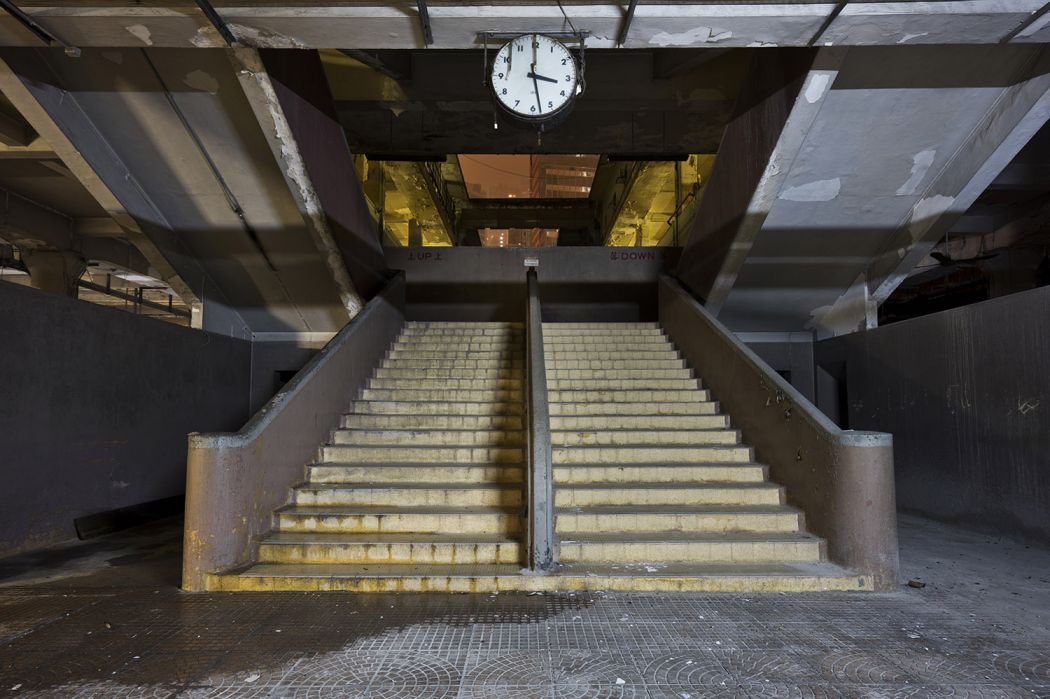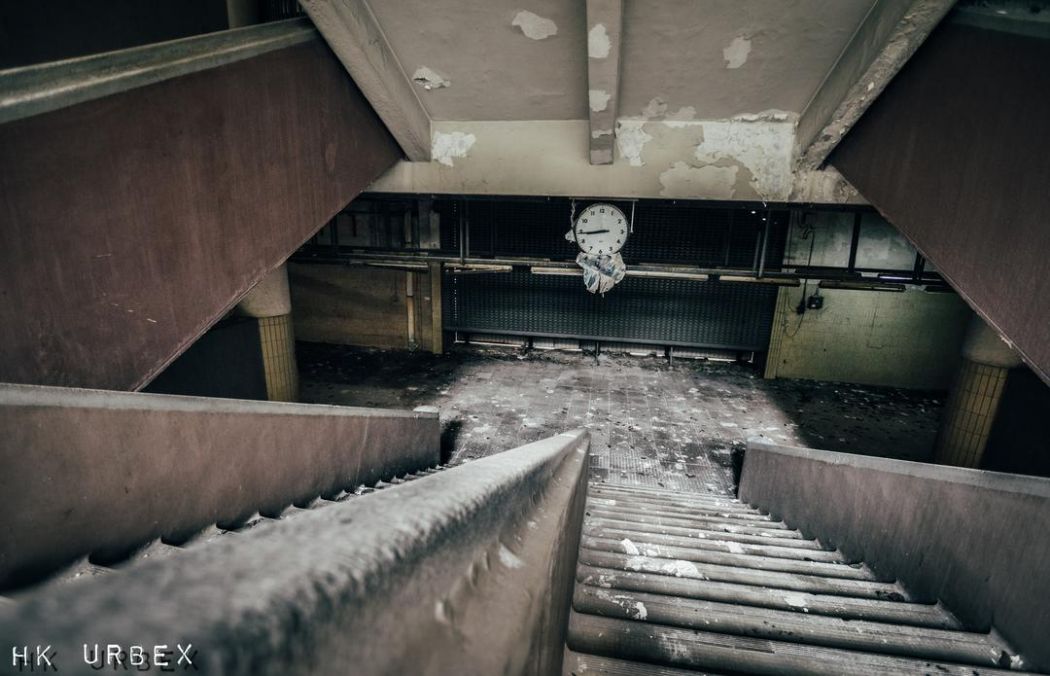Many of you will have noticed: the redevelopment of the old Central Market is underway, now that the final tailors’ outlets, trinkets sellers and photo shops have been evicted.
The remaining passageway, which once formed part of the heritage building, still connects pedestrians between the IFC tower and the Central escalator, though it is covered in plastic sheets on both sides and the noise of sledgehammers fills the air.
Usually, the practice would be for a sketch of what is to come to be displayed somewhere on site, but all we are given is a layout of the “Phase 1 Diversion” showing where it is permitted to walk. As it is a pretty wide corridor this is not really necessary, but that is all the transparency we get.

The public has only been told that this Grade-3, rare Bauhaus building is undergoing a “heritage preservation and revitalisation” face-lift, which has been entrusted to the Urban Renewal Authority (URA) – the same authority that has been bulldozing Hong Kong’s heritage at high speed since its foundation in 2001.
If you go on their website, at the section for “preservation and revitalisation” the only specific information given as to the future look of the Central Market is that the building will get a coat of pale gray paint on its exterior.
What else this HK$740 million project will involve is not disclosed, but previous tenants and the Central Market Concern Group, which have been protesting the secrecy and pushing for more information to be forthcoming, say that the number of shops is to be cut significantly when the place reopens.

This is likely to be in 2021-22, but even that is not spelled out with any clarity. The government, on the other hand, has “granted the site to URA” for 21 years.
Also on the website, under the “Frequently Asked Questions” section, the URA’s reply to “Will URA keep all stalls in the Central Market?” is: “The URA plans to preserve at least 13 stalls including stalls designed for fish, poultry, beef/mutton, pork, vegetables and fruit in the Central Market… While the authentic elements will be preserved, the stalls will be integrated with the interior design and future uses”.
See also: Obituary for the historic Central Market: It survived war and riots, only to be killed by greed
Which means absolutely nothing – not just because beef and mutton are two different products, or because how you can integrate something now with future uses is not quite straightforward, but because the question itself makes no sense: “all stalls” has not been a constant number through the years.

When the Central Market opened in 1842 it was mostly a food market, with more than 200 stalls. The three-storey building that took the place of the street-level market was built in 1939, and had stalls in very different numbers through the years. Then, it was closed down in 2003, and as the long and highly controversial renovation project got under way, a few tenants along the main corridor on the second floor refused to vacate for as long as they could.
Since 2009 the Hong Kong government, after agreeing to protect the Central Market’s rare historical architecture, handed it over to the URA, whose previous examples of “preservation” are under everybody’s eyes. Take Wedding Card Street, in Wanchai, for example, and the promise made by the URA that they would keep some sort of Wedding Card theme – which has not happened.
Two years ago, the URA’s then managing director, Iris Tam Siu-ying, suddenly quit over what was said to be an “irreconcilable disagreement” with current chairman Victor So Ying-woh over the direction the Authority should take – namely, whether its “society mission” should take precedence over its requirement that it is “profitable” and that it acts as a property developer.
Tam left, and So remained, but the tensions remain. Now the URA is paying more lip service to the idea that conservation and heritage might be part of its mission after all, so we have been promised that there will be less tearing down of old buildings.
The fact that this might be because there are fewer old buildings left to tear down in the first place might also have something to do with that decision.

See also: Central Market, 175 years on: A marketplace older than Hong Kong as we know it
Secrecy and precedent make it impossible to walk through the Central Market’s corridor without a feeling of doom, especially as the whole Sheung Wan area, which can be looked at while continuing up on the escalator, has been wrecked beyond recognition.
It has been turned into a tacky series of high-rises with fancy names, full of tiny flats with very low ceilings and stamp-sized windows. On Staunton and Elgin Streets, some “Italianate” buildings have replaced the old ones, after having evicted local food artisans of the authentic kind – making soy products and dumplings, not flat whites and coconut milk frappuccinos.
Nobody can say Hong Kong doesn’t care. Underneath the escalator, along a fence, the Wing Woo Grocery Concern Group has put up posters explaining why the building must be respected. It seems to have been saved from the wrecking ball after a rare U-turn by the URA.
All over Hong Kong, from the streets of Central to Kowloon to Sai Kung, from Lantau to Cheung Chau, countless groups take it upon their own crowded schedules to tell the government to stop destroying Hong Kong for shopping malls and a perverted idea of encouraging tourism.
The public pressure on heritage sites seems to have yielded tiny but welcome results. For newer landmarks, however, the battle is on, as redevelopment keeps being considered the way forward for everything, as those concerned about the future of the much loved Western Cargo Pier know only too well. Here too, the lack of transparency is staggering.

The scar left by the destruction of the old Star Ferry Pier is still deep and painful – one of the deepest wedges between a very large part of the population and the unelected bureaucrats that make up the Hong Kong Government. Without allowing the community to have a greater say in the city’s preservation and development, the tensions are bound to continue.
